Apple is adding Live Loops, as predicted and leaked. But the new release of Logic Pro X is far more than that, with new workflows for sampling, looping, and beatmaking on the Mac and with the iPad.
It turns out the Live Loops interface we saw leaked – and previously in some form in GarageBand for iOS – is just part of the story. There are several big components coming together at once.
For long-time Logic users waiting for an update to the EXS24 sampler – which in turn underlies a lot of the soundmaking capabilities of Logic – this is that, too.
New in this version – and some obvious points of comparison in the market place for each:
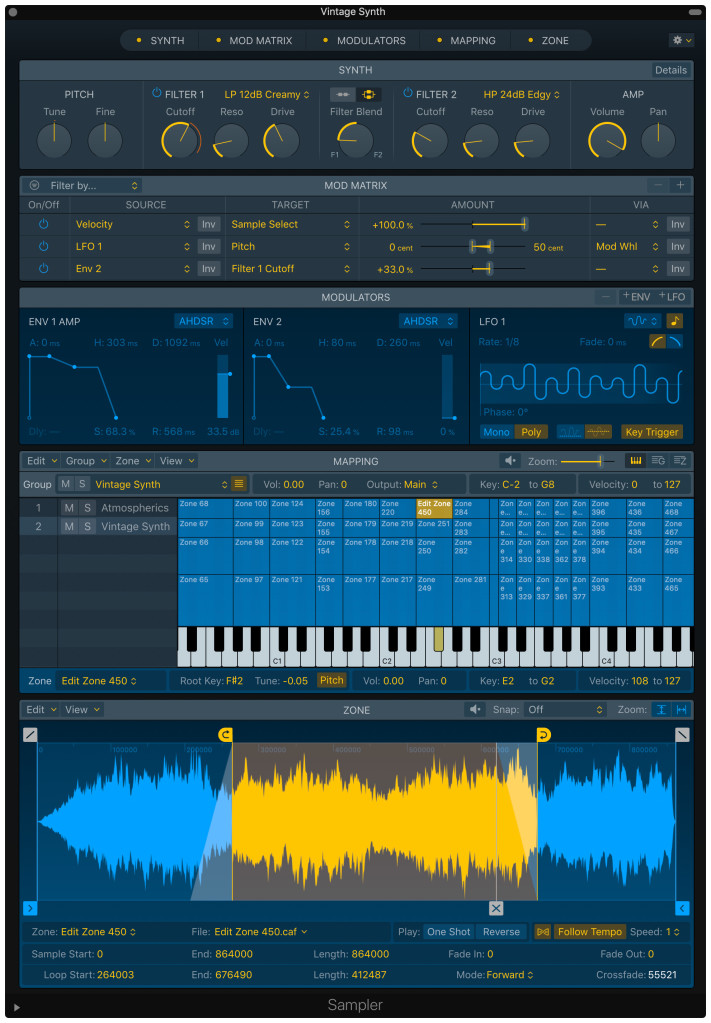
Sampler: a new-generation multi-sampling plug-in with new workflows and UI – but still backwards-compatible with the EXS24. The new UI is unmistakably current-generation Logic, but is also easier to compare to offerings from Native Instruments, Ableton, and others.
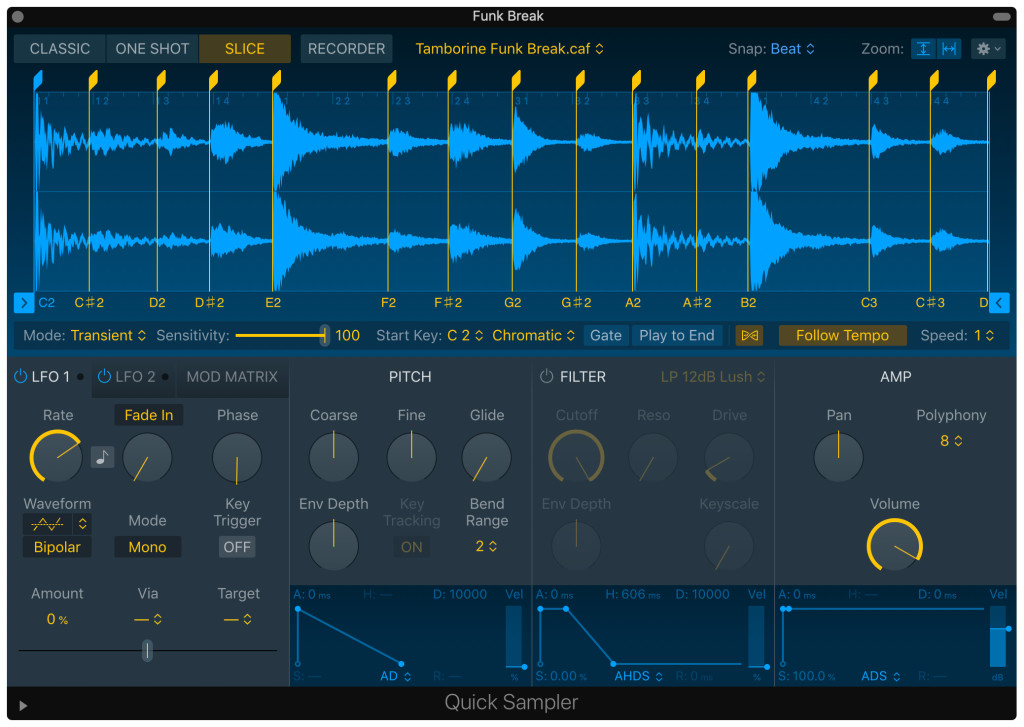
Quick Sampler: a fast drag-and-drop simplified sampler. A “Simpler,” if you will. Okay, yeah, there is some similarity to the same idea in Ableton Live. You can sample straight into the tool.
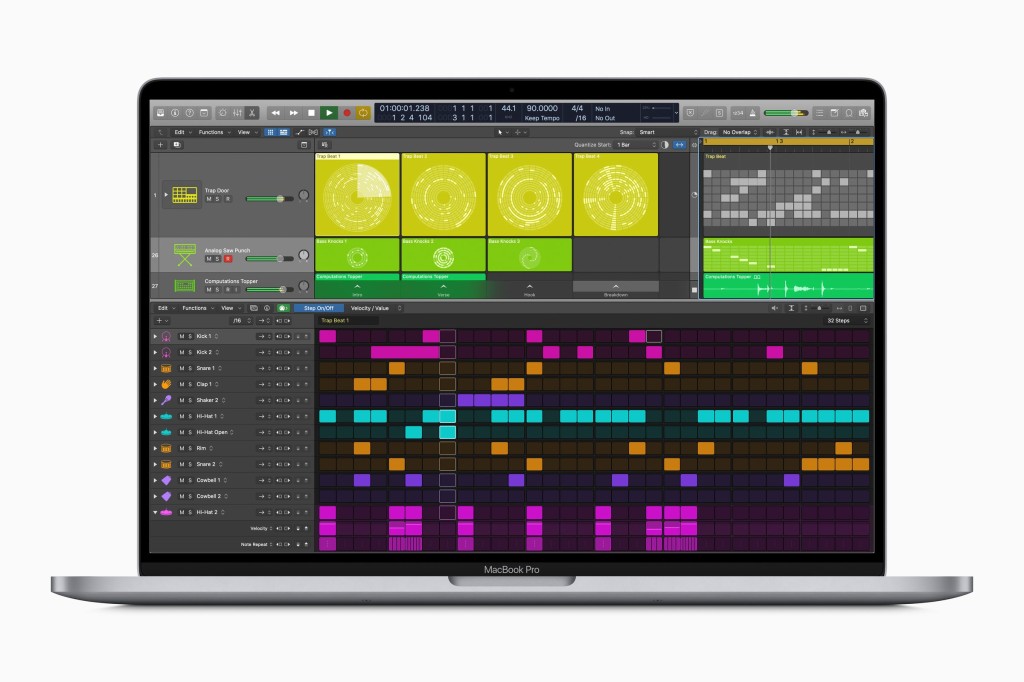
Step Sequencer: a new editing view with step-based pattern editing, including note velocity, repeat, gate, skip, playback direction, and randomization. Having this sort of interface front-and-center will seem really familiar to anyone who’s worked with FL Studio (nee Fruity Loops), but the layout of the UI here is structurally closest to Maschine.
Drum Synth uses software synthesis and modeling (not samples) to produce kick drums, snares, toms, and percussion. Of course, eventually everyone gets tired of just using samples of the 808 and 909, but this is also a feature that’s been prominent in both Maschine and Ableton Live in recent years. (Anyone getting a pattern here?)
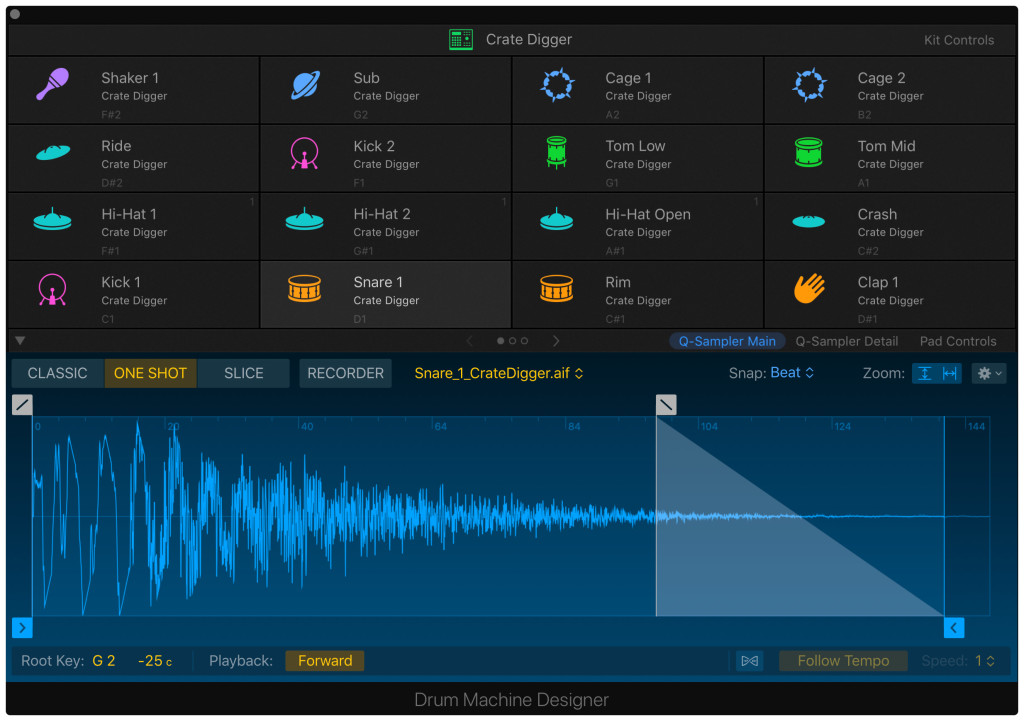
Drum Machine Designer was already in Logic, but this new version integrates with Quick Sampler and Drum Synth so that you can build kits out of those two tools.
Remix FX are here as predicted, too – Bitcrusher, filter, gater, and repeater, looking for all the world like features associated historically with Ableton Live (and later with Maschine), as well as some hardware (think KAOSS Pad, for one). And yes:
Drag and drop sounds everywhere. An integrated sample engine plus drag-and-drop sampling instruments means that sampling is now a core part of the Logic workflow – not just EXS24 as an island. More on this element soon.
Autosampler is integrated. This Apple acquisition now is upgraded to an integral feature of Logic and … well, that’s huge. That alone might be reason to consider a move to Logic, and could easily be a topic for another article.
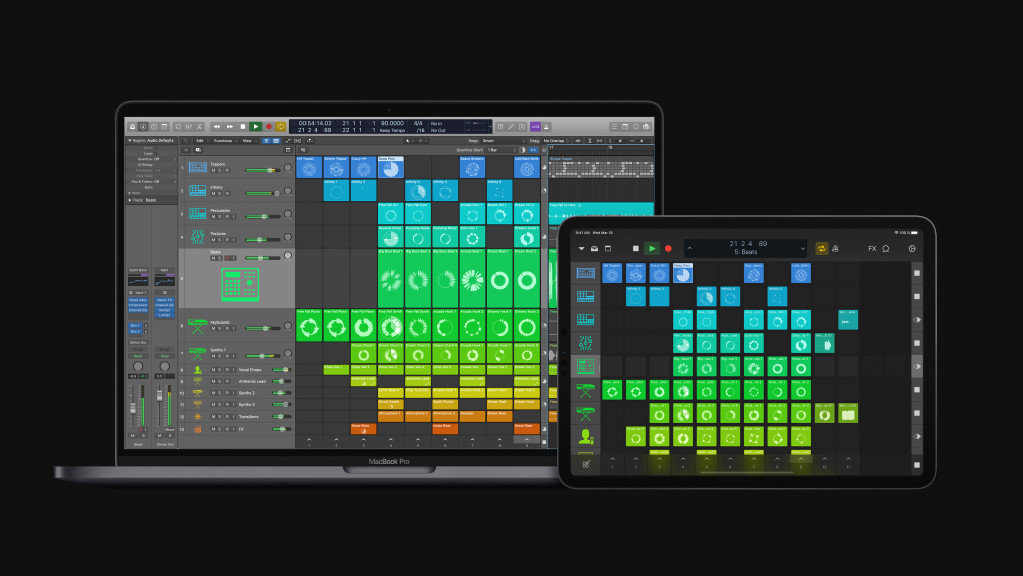
Live Loops lets you make a grid of patterns and samples/audio snippets and loops, and trigger them in non-linear fashion, just as you can in Ableton Live. This feature has graduated to desktop form from the iPad, but it might be more appealing in the desktop context.
There’s also enhanced performance, says Apple, plus improvements to Logic Remote. But that brings me to one takeaway here.
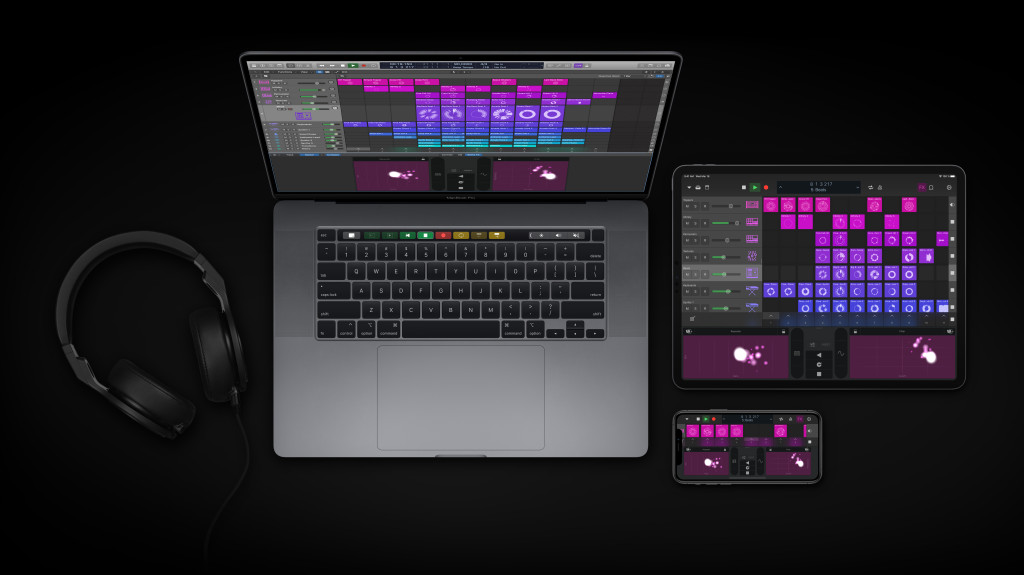
It’s the integration
So, this just shipped, Apple did not provide me an advance copy, and so I haven’t tried it yet. But – first impression suggests Apple may have really pulled off a coup here, in a more significant way than they have in a long time.
Yes, a lot of this is familiar – it’s workflow stuff that is widely used by producers in Ableton Live, Maschine, and FL Studio (among others, in forms maybe a little less obviously like this). And yes, the EXS24 overhaul is long overdue – that aspect also will deserve more detailed attention from people making soundware content.
But sometimes it’s useful to be last to the party. The latest Logic instruments and effects and workflows all start to look very consistent and integrated. Apple has put them together in a way that looks clear and uniquely theirs.
So it’s a big deal that you’re able to put together kits with Drum Machine Designer from both synths and Quick Sampler patches, and then use those with the Step Sequencer. (I have to see exactly how Live Loops fits in with this, but that is obviously relevant, too.)
We also start to see iOS integration that makes sense. Logic Remote lets you work with the loop grid, even browsing and adding loops, and working with remix effects. I hope that there’s integration for the Step Sequencer and some other features, too. Logic Remote was already a Logic feature, but this may be the most compelling feature we’ve seen apart from mixing – something that’s genuinely more intuitive from the touch interface.
There’s also Voice Memos integration with sampling, which is a clever idea (and what I originally expected as far as sample integration from Endlesss).
Which UI got which refresh
Apple has been slowly overhauling Logic ever since it first acquired the software from Emagic over a decade and a half ago – with a lot of that team still involved, and pretty consistent management on the Apple side, as well.
You can spot how they’ve done more or less on the Plug-ins and Sounds page.
I’ll have to download the update for a full run-down, but I’ll say this – the software Apple has redesigned since the acquisitions of Alchemy and Camel Audio have been some of the clearest anywhere.
That especially applies to the new Sampler (now just called Sampler, not EXS24). There’s really easy access to modulators with tons of feedback. And zones and mapping look easy to find, as well. Quick Sampler goes there, too. Both let you grab sound (recording or drag-and-drop), loop, slice, and map zones.
Well and having compared Quick Sampler to Simpler, the UI here has more in common with recent plug-ins than any host – down to a growing taste for animated visual feedback and clear semi-modular definition of structure.
But we have now three basic categories of UIs in Logic.
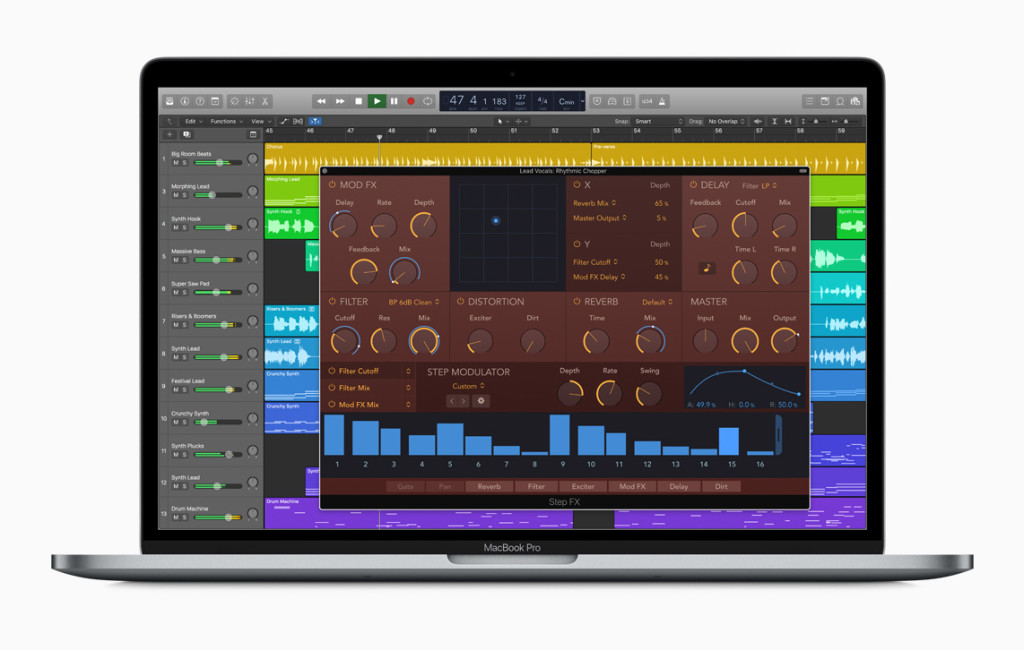
Flattened UIs. This is the really good stuff, and it feels like the Logic team is even getting gradually more comfortable with the design language. It includes both redesigned UIs for familiar tools (Space Designer), acquired tools with updates (Phat FX, Step FX, Alchemy), and new stuff (the gorgeous ChromaVerb, and now the new Quick Sampler). Some of these also translate nicely to Logic Remote in some way, though it’d be nice to see that extended. But the main thing is, because it’s scalable, you can resize it to accommodate vision comfortably, and it maps well across screen sizes and densities. (Cough, Windows high-DPI. Ugh.)
Skeuomorphic “vintage”-modeled skins. These cover a range. Retro Synth, Vintage B3, Vintage Electric Piano, Vintage Melltron, and Vintage Clav all have varying degrees of widget-skinning to look like the stuff they’re modeling. Vintage Tube EQ, Vintage Console EQ, and Vintage Graphic EQ, Compressor, the same. Like the flattened UIs, these are scalable – so the skins are basically there for added visual memory, but otherwise these have the same interaction advantages of the other redesigns.
Things that are just actual pictures. Bass Amp Designer, Amp Designer, and most bluntly, Drum Kit Designer all have giant images of the stuff they’re modeling. These mostly live in the background, actually, as a visual reference – though at least with the amps, they help to illustrate mic placement (and remind you what a particular term means). Drum Kit Designer is a bit silly and an outlier. Pedalboard is the more useful of these, and the closest to other software tools, in that you actually can manipulate the interface and interact the way you would with the real thing.
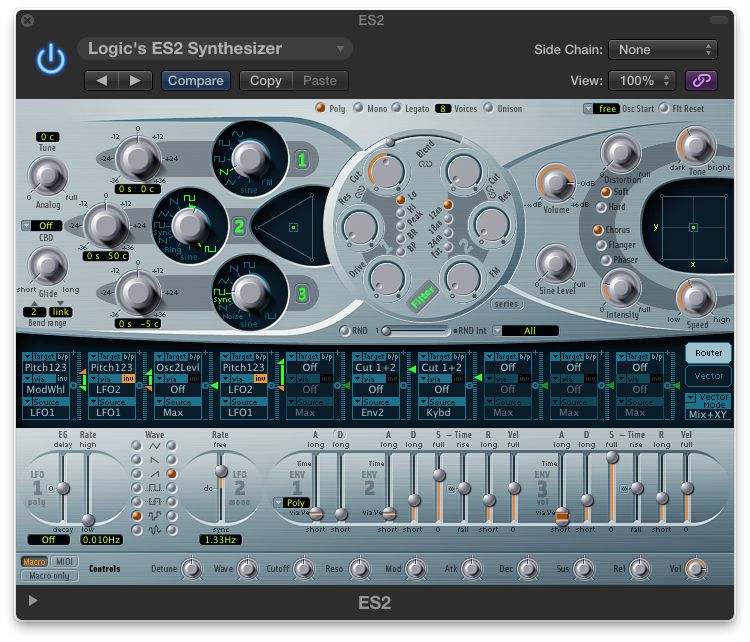
Emagic lives! Okay, the old design language still lurks inside Logic, some of it just following Apple acquiring Hamburg’s Emagic or just after. And that was 2002.
The ES2 is so retro-fugly maybe it’s starting to be cool? Sort of? Ringshifter is still looking weird. Sculpture is beautiful. Sure, you can’t scale the UI, but then that suggests anyone can really see it at any screen resolution, which I highly doubt. (I love Sculpture; maybe then we’ll finally get Logic Pro XI? Space Designer’s overhaul was perfect – old patches still work, UI is better, new features added. Sculpture is more complex, so might need a side-by-side choice of the old and new.)
I’ll try to do a full count. At least by replacing the EXS24 and building a new Drum Kit Designer (to replace the quirky usability disaster that was Ultrabeat), it’s hard to complain.
It’s a thing
For Logic users, 10.5 looks like what you’ve really been waiting for. I look forward to giving Sampler and Simpler a full run-down, and seeing if Logic holds up to integrating Live Loops.
I hope Apple continues to push some of the iOS integration, as it’s almost like their Ableton Push (and even some Live users prefer tools like Touchable).
I don’t know that this will particularly rock users of Ableton Live (or FL Studio, or Reason, or Maschine, or their ilk). Live for its part does have great workflow integration of its own; these are really different approaches and with fairly loyal user bases, each. But it absolutely does make sense for these workflows to come to Logic in a form that fits its paradigm.
I agree with Apple when they say that this is the biggest update to Logic Pro X since its launch. Of course, that does beg the question why it’s called Logic Pro X 10.5, why we need two instances of the number ten in two different numeral systems in the same product name, or if we will ever get to something after X. Maybe with an ARM port? Maybe I don’t even want to ask questions like this, and should go off to quietly play with this stuff? Sure.
This is yet another version of Logic Pro X that’s US$199 new, but a free upgrade once you’ve got it.
https://www.apple.com/logic-pro/
The 90-day free trial offer is still going. In fact, even if you started a free trial in the old version, you can get the trial in this new one and the clock starts from when you download and install.
With or without it, Apple’s aggressive pricing on Logic and the increasing number of tricks it performs could easily make you decide spending more on an Apple machine is worth the investment. And I’m sure that’s part of the idea.